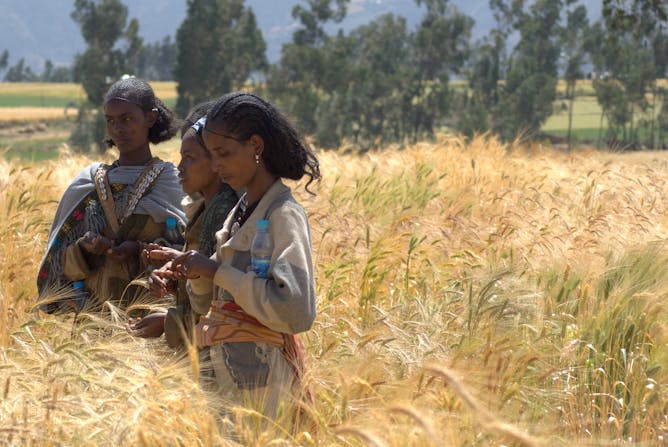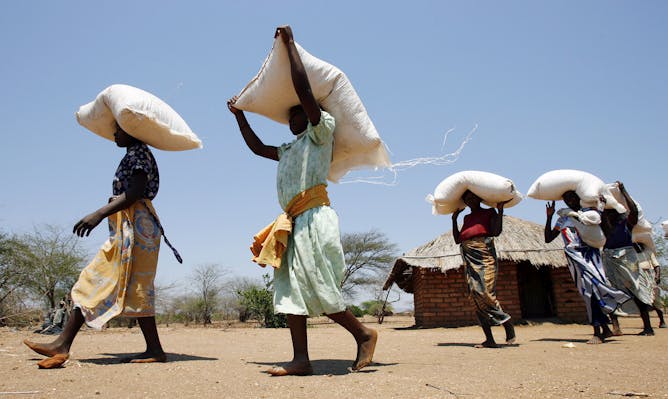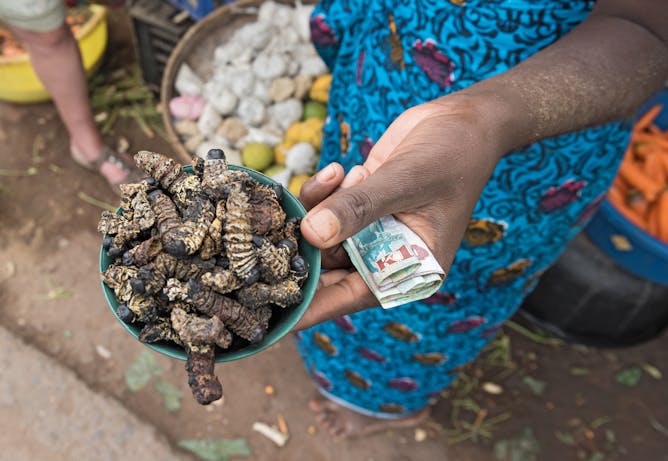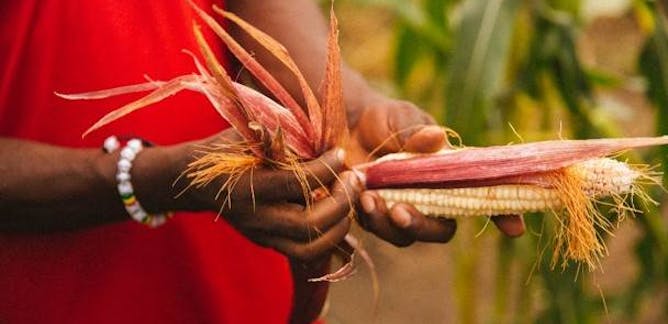|
Today marks World Food Day. For the third year in a row the number of people going hungry in the world has increased. By some estimates over 800 million people don’t have enough to eat every day. Many live in Africa. So what are the solutions? In this special edition, academics look at some possible solutions.
One answer lies in improving the quality of the soil that key staple diet foods are grown in. Frédéric Baudron explains how research in Ethiopia has shown that soil with higher amounts of organic matter produces wheat with more nutrients. Managing soil in ways that makes it healthier can help fight poor nutrition.
As hunger rises around the world, governments are scrambling to improve their countries’ food security and agricultural outputs. Sheryl L Hendriks, Elizabeth Mkandawire and Nosipho Mabuza found some crucial gaps in the plans that 10 African countries have to stem hunger. And finally, Esther Ngumbi explains how the critters can help reduce malnutrition. They’re abundant, nutritious and an easily accessible source of food.
|

Farmers in Ethiopia evaluate traits of wheat varieties.
Flickr/J.van de Gevel
Frédéric Baudron, International Maize and Wheat Improvement Center (CIMMYT)
More action is needed to increase soil organic matter for the sake of improved nutrition.
|

Hunger is a daily reality across large parts of Africa.
Jon Hrusa/EPA
Sheryl L Hendriks, University of Pretoria; Elizabeth Mkandawire, University of Pretoria; Nosipho Mabuza, University of Pretoria
It's one thing to come up with food security plans. But implementing them is tough.
|

Roasted mopane caterpillars are eaten in Livingstone, Zambia.
Rainer Lesniewski/Flickr
Esther Ndumi Ngumbi, University of Illinois at Urbana-Champaign
Insects are an excellent tool to fight hunger and malnutrition because they are abundant and nutritious.
|
From our archive
|

Sheryl L Hendriks, University of Pretoria; Katrin Glatzel, The International Food Policy Research Institute (IFPRI) ; Ousmane Badiane, The International Food Policy Research Institute (IFPRI)
Policy choices made by Senegal, Ghana, Rwanda, Angola, Cameroon, Ethiopia and Togo over the past 15 years have led to significant reductions in child undernourishment.
| |

Esther Ndumi Ngumbi, University of Illinois at Urbana-Champaign
There were some African food security initiatives from 2017 that deserve a special mention for the precedent they set.
|
|
|